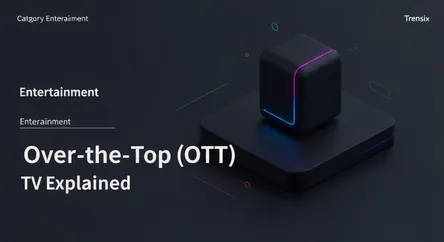Entertainment
Over-the-Top (OTT) TV Explained

Discover what Over-the-Top (OTT) means. Learn how streaming services are changing how we watch TV, bypassing traditional cable subscriptions.
What is it?
Over-the-Top (OTT) refers to the practice of streaming film and television content directly to viewers via the internet, bypassing traditional media distributors like cable and satellite companies. This content is delivered 'over the top' of existing internet infrastructure. Major examples of OTT providers include subscription-based video on-demand (SVOD) services like Netflix, Disney+, and Amazon Prime Video, as well as ad-supported services like YouTube TV and Pluto TV. Viewers can access OTT content on a wide range of devices, including smart TVs, computers, smartphones, and gaming consoles, offering unprecedented flexibility in how and where they consume media.
Why is it trending?
The rise of OTT is driven by a consumer shift known as 'cord-cutting,' where households cancel traditional cable subscriptions in favor of internet-based alternatives. This trend is fueled by the desire for lower costs, greater content choice, and the convenience of on-demand viewing without being tied to a broadcast schedule. High-speed internet has become widely available, making high-quality streaming reliable. Furthermore, OTT platforms invest heavily in exclusive original programming, creating 'must-see' shows and movies that attract and retain subscribers, further accelerating the move away from legacy TV models.
How does it affect people?
OTT has fundamentally changed personal media consumption. It has popularized 'binge-watching,' allowing viewers to watch entire seasons of a show at their own pace. This shift provides consumers with immense control and a vast library of content at their fingertips. However, it has also led to market fragmentation, often requiring viewers to subscribe to multiple services to access all the shows they want to watch. This 'subscription fatigue' and the sheer volume of choices can sometimes feel overwhelming, but the overall effect is a more personalized and viewer-centric entertainment landscape.